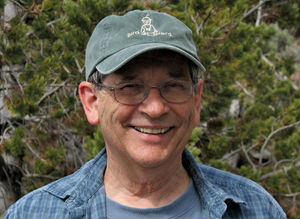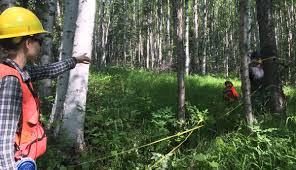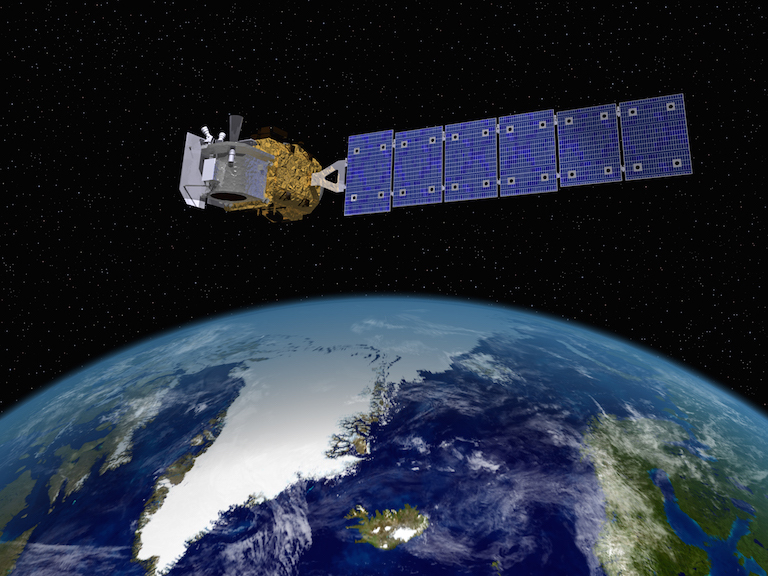STEM Career Connections
Meet James Smith, Research Scientist

Job Title
Research Scientist
James Smith
Bio
09.09.2013
Credit: IEEE news source
IEEE Fellow James Smith occasionally ditched class as a kid to wander with friends in the woods of rural Michigan. As he got older, his love for nature remained, and it became part of his work.
Merging his studies in math and physics with his passion for the outdoors, Smith found a career in remote sensing that allows him to study nature from space. His research helped pioneer remote sensing of Earth to study the effects that changes in flora and fauna have on one another.
“Computers and spectroscopy have been used in the past in astronomy to determine the elements that makeup stars,” Smith says. “More recently we have been pointing our sensors toward Earth, using remote sensing to better understand the properties of plants and changes in ecosystems. Initially, we were doing things on local and regional levels. But the idea was that eventually, we would do things from space on a global scale.”
Scientists employ active and passive sensors that exploit the complete electromagnetic spectrum. Laser spectroscopy and radar and optical satellite imaging sensors are routinely used to identify the material composition of plants and changing ecosystem patterns over time.
After earning bachelor’s and master’s degrees in math and a Ph.D. in high-energy physics from the University of Michigan, in Ann Arbor, Smith moved into biology and environmental science. His 40-plus years in the field began in 1970 as a faculty member at Colorado State University, in Fort Collins. He held his first position there as an assistant professor at the College of Forestry and Natural Resources, teaching graduate courses in remote sensing and computer applications in natural resources.
“This was the time, in the ’70s, of the burgeoning environmental movement, and I was trying to move into that area,” he says.
While he was teaching, he built computer models for radiative transfer and energy balance in vegetation to help him understand how forests and grasslands changed the way they reflected sunlight and radiated heat. His findings helped map natural plant communities and monitor forest health in Colorado at the Pawnee National Grassland on the state’s Eastern Plains and at old mining sites in Leadville.
“I always had an interest in nature. While getting my degrees and taking breaks from writing my thesis, I would sit in on lectures on wildlife and biology at the University of Michigan’s Matthaei Botanical Gardens. I just saw beauty in math and nature,” he says.
THE NEXT STEP
In 1985, NASA recruited Smith to head the Biospheric Sciences Branch at its Goddard Space Flight Center, in Greenbelt, Md., and develop a biospheric remote-sensing program in preparation for NASA’s expansion into Earth systems science.
“A lot of the students I was teaching were getting jobs at NASA, and I just followed,” he says.
Smith and his colleagues helped pioneer projects that evaluated how plants and natural elements reflected solar radiation at visible and infrared wavelengths, as well as how factors such as water and stress affected that reflection. He also studied how changes in the environment could be better detected using the new remote-sensing techniques.
When he entered the field, it was a nascent area of study. Today the technology is being used among other applications to help prevent famine in Africa, monitor deforestation in the Amazon, track polar ice shelf melting, and determine why honeybees are disappearing.
“A farmer can look at a field and say, ‘Of course I know it needs water,’” Smith says. “But when you’re able to develop the technology to do this in a semiautomatic fashion over a broad area and capture this in computer algorithms, then you can use that knowledge, for example, to combat potential famine in certain countries.”
In the early 1990s, while at NASA, Smith spent evenings working toward a master’s degree in computer science from Johns Hopkins University, in Baltimore. “The course of study had a major impact on my research,” he says. “I learned new techniques in neural networks and artificial intelligence that I could bring to my work.”
MAKING CONNECTIONS
One of Smith’s novel applications was creating computer models of bird species’ migration patterns, which included information on wind currents and ecosystems where the birds landed to refuel. He could observe how the birds altered their migration routes when their feeding grounds changed. That offered clues as to how birds might modify their migration in response to climate change. He received a NASA Special Act Award in 2007 for leadership in advancing the new field of satellite ornithology—the study of birds from space.
He retired from NASA last year and is entering a new chapter of his life at the University of Maryland, Baltimore County, where his research is taking him in a new direction. At the Center for Hybrid Multicore Productivity Research, helmed by IEEE Member Milton Halem, Smith is working on a “human sensor network,” which uses the cloud and high-performance computing to analyze social media and extract what people are reporting on Facebook, Instagram, and Twitter about bad weather, biohazards, and other environmental anomalies they’re seeing in their neighborhoods. The idea is to apply the information to drive geophysical and environmental models of impending or spreading emergencies.
“The work has potential applications in disaster mitigation, such as providing better updates in storm-surge and flooding predictions and identifying impacted areas,” Smith says. As storms advance, engineers and computer scientists run thousands of storm-surge models based on different parameters. The ability to assimilate time-varying, geocoded social media data might help hone the most viable models. For areas already affected, social media can provide near-real-time information to enhance recovery operations.
Smith says his IEEE involvement helps inspire his work. He is the chief financial officer for the IEEE Geoscience and Remote Sensing Society, which presented him with an award in 1999 for outstanding service, and he was editor of IEEE Transactions on Geoscience and Remote Sensing from 1991 to 1995 and 2001 to 2003. He is also an IEEE program evaluator for ABET, the organization that accredits college and university programs in applied science, computing, engineering, and engineering technology. He finds that observing what is taught in schools broadens his awareness of engineering techniques, he says.
He gives high marks to his involvement with IEEE: “You meet people from every field, from all over the world, and come together in teams to accomplish things bigger than yourself.”




